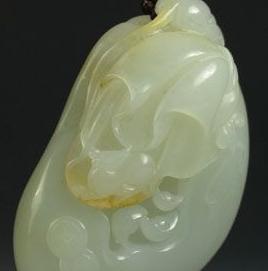Burmese jade, produced from the Yunnan border to northern Burma. Its name comes from a bird with very bright feathers. The bird's male feathers are red, the name of the ostrich, the female's feathers are green, the name kingfisher, and the collective name of the jade is also known as "Burma jade." The earlier literature was also called Burma jade or jadeite. It is generally believed that Burmese jade was valued in China in the late Qing Dynasty, but according to some historical records, this time was greatly advanced. There is currently conclusive evidence that the history of mining and use of jade in Myanmar has been around for about 400 years. It was introduced to China in the middle and late Ming Dynasty, and there are records of the production of instruments in the Ming and Qing dynasties. Cotton Spandex,Polyester Spandex,Spandex Super Soft,Spandex Super Soft Printing CHANGXING JINMAOCHANG TEXTILE CO.,LTD. , https://www.jmcknittedfabric.com
As for the earliest records of Burmese jade entering the Qing court, Yang Boda, a jade expert, believed that it was the tribute of the Yunnan governor Zhang Yun with his tribute in the 11th year of the reign of Emperor Yongzheng. At that time, he was known as the “Yongchang jasperâ€. (According to the Qing Dynasty jade material color standard, where the green jade are called jasper) "Yongchang" and Myanmar neighbors, so here referred to as "Yongchang jasper" should refer to Burma jade produced in Myanmar is no doubt. The name of the "Burma Jade" in the Qing archives was first seen in the "Zhuo Dang" on March 27th, 36th of the Qianlong period. The place recorded was sent to Wan Shougong of the Yuanmingyuan for the birthday of the Emperor Zhu Rongji. One of them is "Burma Jade Bottle." In addition, a jade necklace with Burma jadeback clouds collected in the National Palace Museum in Taipei is accompanied by a record yellow sign for the tribute points collected in that year. The above time was forty-eight years of Qianlong. Early jade jade as a new variety of jade, not rare, has not been valued by the world, but because of its water color and texture make it in the very short period of time began to be favored, the value is also rising.
Burmese jade is mainly produced in the Meng Arch in northern Myanmar. It was once popular in China during the late Qing Dynasty and early Republic of China. Because of its high jade hardness, good texture, strong toughness, and bright and bright ground, the Myanmar jade is bright and peaceful. With high preservation and collection value, it is called "king of jade". It is also considered by many people as a symbol of good luck and fortunes. It is loved by many people who love jade and jade. The jade jade stone in this block has a weight of 18.34 kilograms. The water head is excellent and it has the transparency of jadeite. With the light filter, the color is still pale green, translucent, hard and dense, delicate and moist, bright and beautiful, and pleasing to the eye.
Fine texture, adequate water, full-body bright green system simple, thick but not ambiguous, deep rich abundance of luxury show; the color of fresh, alcohol without stagnation, the atmosphere is still with a hint of charm. The light can be seen along with a lively brilliance of green waves, such as a wave of ripples, silent blooming a spring ... ... minor impact, suitable for long-term investment, high-end jade, delicate, crystal clear, temperament psychic, totally natural, absolute Fenghua, amazing, is a national art treasure bred by the natural elves and humanities.
The sound is crisp and clear; it is clearly distinguishable from the rest of the stone. It is a rare jade stone, which is extremely difficult to meet in the market. It is extremely rare and has high collection value and appreciation space.
In 2008, the global financial turmoil caused a short-term decline in Burma jade prices, but soon it regained its upward momentum in mid-2009. By 2010, the price of medium-to-high-end Burmese jade has risen moderately from an average of 12% to a year earlier, mutating prices to double. Affected by the economic environment, from the beginning of 2011, the jade industry in Myanmar has entered a negative growth phase. Especially pure white glass species and ice species, these two varieties of Burma jade wool materials and jewellery have risen too quickly before, and by the end of 2012, the price dropped by about 35%. The prices of middle and low-grade Burmese jade products also dropped by about 10%, while the high-grade Burmese jade, which is a kind of water-colored product, although its finished product sales shrank, it was more resilient.
Talking about the reasons for the rise of Burmese jade, the director of the Guangzhou Longsheng International Marketing Department analyzed: Burma jade is a non-renewable resource, Myanmar's resources are gradually shrinking, the Burmese government has not advocated the direct export of wool, they invited senior Chinese technicians to serve them in the past. Mining and processing Burma jade will be sold to other countries after it is finished. This will result in more profits, leading to an astonishing increase in high-end Burmese jade wool.